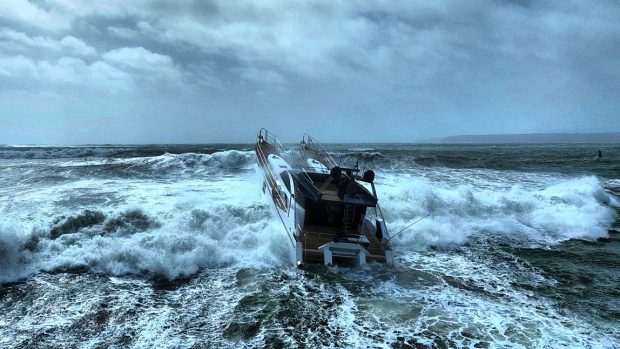Some tips on getting the boat in good order for the season from a leading insurer
Following the winter lay-up period, insurers Navigators and General have offered some advice on preparing your craft for use over the season.
N&G say they generally experience an increase in claims notifications over March and April as boats are launched, or when owners return to find their boats have been damaged during the winter.
They say: “Carrying out a number of simple pre-launch checks, and ensuring that there is good communication with the yard/ launching company can significantly help reduce the risk of potential accidents. Making sure that all parties know and agree the launch date should ensure that all works have been completed in time, leaving the vessel ready to be launched and used safely throughout the summer season.
“Wherever possible it is advisable for the owner or skipper to be present when the boat is launched to monitor the vessel for any unusual water ingress for at least a couple of hours after settling. In their absence, the yard should take on this responsibility but they will need full access to the boat to carry out adequate checks. Knowing where to place the slings to avoid damaging the boat when she is ready for launch is much easier to do ashore. It’s important to note that the yard will often supply and apply stickers to help with this process.”
Here is their check-list:
Have a yearly pre-season machinery maintenance check by a boat engineer
Agree a launch date in advance and arrange access to boat for yard if you cannot be there in person
Do not start engines until all basic checks have been completed, including opening cooling water seacocks
Check fuel or gas lines and cables have not been trapped whilst re stowing gear
Do not assume anything will be checked or replaced, ask if in doubt
Check all hoses, skin fittings, through hull fittings & hose clips
Check, and tape rigging split pins or securing bolts
Ensure distress flares & lifejackets are still in date and adequate for you boat
Check sails for signs of vermin damage or rot
Ensure navigation equipment is on board, up to date and working
Common problems include:
Flooring, steps and handles not being properly re-attached after servicing – which can lead to injury
Forgetting to return crucial safety and navigation equipment to the boat – which can make going to sea very dangerous and could lead to prosecution by the Maritime & Coastguard Agency
Through hull fittings not being replaced or hoses not properly re-connected,which can lead to sinking through gradual ingress of water
Rigging not securely attached after the mast is put in or securing pins not fastened or taped over for security, potentially leading to a dismasting
Not checking engines are fully re-commissioned – which can let you down at a crucial moment or be damaged when started
Underwater gear or log may be damaged on slings or strops when lifted
“Whilst it is tempting to get out on the water at the first sign of a good spring day, spending time on these simple pre-season checks will be time well-spent as the rain, damp and storms over the Winter can cause wear and tear to a boat and equipment. It’s also key to ensure there is no misunderstanding about who is to complete the maintenance – be it the boat owner or the boat yard. ” says Richard Coleman, Head of Navigators & General.







